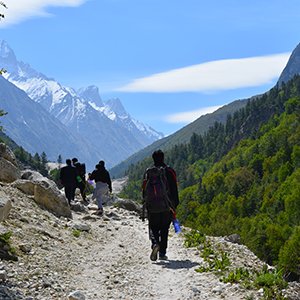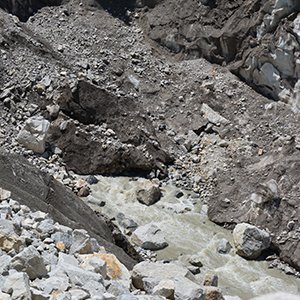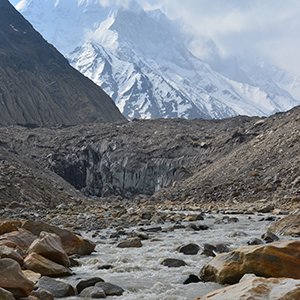The Gaumukh Trek, nestled in the heart of the Garhwal Himalayas, beckons adventurers from across the globe. As a passionate trekker, I embarked on this extraordinary journey to explore the mystique of the Gangotri Glacier, the source of the sacred river Ganges. This adventure took me through a medley of emotions and experiences, from spiritual revelations to breathtaking vistas, and encounters with resilient wildlife. In this article, I will recount my incredible Gaumukh trek experience, offering a glimpse into the serene and awe-inspiring world of the Himalayas.
Preparing for the Journey
Any successful trek begins with thorough preparation. Gearing up for the Gaumukh Trek was no exception. The journey demands careful planning, the right gear, and physical fitness. Acclimatization is a crucial aspect, and a day spent acclimatizing in Gangotri is a must.
Preparing for this expedition was not just about packing the essentials; it was about understanding the terrain, the climate, and the demands of high-altitude trekking. I invested time in researching the best gear for the journey, ensuring I had the right clothing and equipment to stay safe and comfortable.
Acclimatization is a key element of any high-altitude trek. This process allows the body to adapt to decreased oxygen levels, reducing the risk of altitude sickness. During our day in Gangotri, I took short hikes to higher elevations, allowing my body to gradually adjust to the thin mountain air. Choose The Searching Souls for your Gaumukh trek, and be guided by experts who ensure your safety and provide a deeper understanding of the region's cultural and natural heritage.
Day 1: Rishikesh to Gangotri
The journey started from Rishikesh, a vibrant city in the lap of the Himalayas. The scenic drive to Gangotri marked the commencement of the adventure. The bustling city soon gave way to tranquil landscapes, a taste of what was to come. The drive allowed time to soak in the anticipation of the adventure ahead. It was a moment of reflection, excitement, and a little bit of nervousness.
As we approached Gangotri, the atmosphere changed. The cool mountain air and the sight of the Bhagirathi River signaled our entry into the Himalayan realm. We checked into a simple but cozy guesthouse, ready to begin our trek the next morning.
Day 2: Gangotri to Bhojbasa
From Gangotri, the trek meandered along the banks of the Bhagirathi River. The trail was adorned with lush meadows and dense forests, a veritable paradise for nature lovers. After a day's trek, we reached Bhojbasa, our first campsite. The day was not without its challenges, as the altitude started to affect our breathing, and the terrain became steeper.
The campsite at Bhojbasa was a temporary home, nestled among the mountains. The night sky at this altitude was a revelation, with stars so close it felt like you could touch them. It was a moment of sheer wonder and an early sign of the incredible natural beauty that lay ahead.
Day 3: Bhojbasa to Gaumukh
The trail continued to ascend, bringing us closer to the glacier. As we approached Gaumukh, the landscape grew barren, and the chilly winds signaled our proximity to the icy wonder. Finally, we stood at Gaumukh, humbled by the sheer magnitude of the glacier.
The sight of Gaumukh, with its immense ice formations and the glacial stream that would eventually become the Ganges, left us awestruck. It was not just a destination; it was a moment of connection with the forces of nature that have shaped the earth for millennia.
Day 4: Exploring Gaumukh
Our fourth day was dedicated to exploring Gaumukh. The glacier's sheer expanse left us in awe. We ventured close to the glacier, careful not to tread on its fragile surface. The sound of melting ice, the crispness of the air, and the feeling of being in the presence of something ancient and powerful left an indelible mark on us.
Witnessing the origin of the mighty Ganges was a surreal experience, reminding us of the sanctity and wonder of nature. We sat by the glacial stream, contemplating the journey so far, and the spiritual significance of this place became palpable.
Day 5: Back to Gangotri
As our journey neared its conclusion, we retraced our steps back to Gangotri. The familiar landscapes had transformed during our absence, and the beauty of the Himalayas remained enchanting. The return journey was not just a physical descent; it was a descent from the high altitudes of the mountains to the reality of the world below.
The journey back served as a reflection on the experiences of the past days. The moments of challenge, the deep connections with nature, and the spiritual revelations all played through our minds as we made our way back to civilization.
The Natural Wonders

The trek offered an unparalleled opportunity to immerse in the beauty of the Himalayan landscape. The towering peaks, glistening rivers, and vibrant flora painted a picture of nature's magnificence that words can hardly capture. Each day revealed new vistas, new wonders, and a deeper appreciation for the natural world.
The Himalayas are home to some of the world's most spectacular peaks, and this trek took us through a landscape where these giants ruled the horizon. The Bhagirathi peaks, with their snow-covered crowns, were a constant companion, inspiring us to continue the journey.
Spiritual Connections
For many, the Gaumukh trek isn't just a physical journey; it's a spiritual one. The Hindus believe that Gaumukh is the spot where the holy river Ganges descends from the heavens to Earth. This spiritual significance added depth and meaning to the journey. The idea that we were in a place where the divine meets the earthly realm created a sense of reverence and humility.
As I sat by the glacial stream, I couldn't help but reflect on the significance of this place in Hindu mythology. The Ganges, considered a goddess in Hinduism, is believed to purify the soul. It was a moment of deep spiritual contemplation, and I felt a sense of oneness with the universe.
The Wildlife Encounters
The Himalayas are not just about mountains; they are also home to a wide array of wildlife. Our trek allowed us to meet some of the locals. From the elusive Himalayan tahr to the graceful snow leopards, the encounters with these creatures left an indelible mark. We were privileged to witness these animals in their natural habitat, a testament to the delicate balance of life in the high mountains.
One morning, as we were setting off on our trek, we were greeted by a group of Himalayan tahr grazing on the mountainside. These robust, sure-footed animals are well adapted to the harsh mountain environment. Seeing them in their natural habitat was a reminder of the diversity of life in the Himalayas.
The Challenges Faced
Trekking in the Himalayas is no walk in the park. The extreme altitude and harsh weather conditions posed numerous challenges. Overcoming these challenges required determination, resilience, and a strong will. The thin air at high altitudes made every step a little harder, and the cold temperatures at night were a constant reminder of the unforgiving mountain environment.
Altitude sickness is a real concern, and it's crucial to be aware of the symptoms and take precautions. Headaches, dizziness, and shortness of breath are common signs of altitude sickness. It's important to ascend gradually and allow the body to acclimatize. In our group, we closely monitored each other's health, ready to descend if anyone showed severe symptoms.
Gauging Physical Fitness
Physical fitness is paramount for a successful Gaumukh trek. A rigorous fitness regimen before the journey ensured that I could endure the physical demands of the trek. Cardiovascular fitness is especially important, as the trek involves long hours of walking at high altitudes. Strength training is also beneficial, as it helps with carrying a backpack and navigating tricky terrain.
Proper nutrition and hydration are equally important. The trek is physically demanding, and the body needs sufficient energy to cope with the challenges. It's essential to eat well, stay hydrated, and take regular breaks to rest and refuel.
The Importance of Sustainable Tourism
The fragile Himalayan ecosystem deserves preservation. Sustainable tourism practices are crucial to maintaining the pristine environment of the region. Trekkers must tread lightly and respect nature's delicate balance. This means adhering to a "Leave No Trace" philosophy, where we carry out all our waste, minimize campfire impact, and avoid disturbing wildlife.
Conservation efforts in the region are vital, and supporting local initiatives that aim to protect the environment is a responsible way to trek in the Himalayas. By being environmentally conscious and respecting the local culture and traditions, we can ensure that this breathtaking part of the world remains pristine for generations to come.
A Life-Altering Experience
The Gaumukh trek was not just an adventure; it was a life-altering experience. The journey left me with a profound appreciation for nature, a deeper connection to the divine, and memories that will last a lifetime. It was a physical challenge, a spiritual awakening, and an encounter with the incredible biodiversity of the Himalayas.
The trek to Gaumukh is more than just a vacation; it's a transformative journey. It pushes your limits, makes you more resilient, and connects you to nature in a way that few other experiences can. It's a reminder of the power and beauty of the natural world and the importance of preserving it.
Conclusion
In conclusion, the Gaumukh trek is a voyage of self-discovery, a communion with the Himalayan wilderness, and a testament to the indomitable human spirit. It's an experience that combines adventure, spirituality, and environmental consciousness. If you seek serenity, adventure, and a deeper connection with nature, this trek is a must.
FAQs
How do I prepare for the Gaumukh trek?
Preparing for the Gaumukh trek involves physical fitness, acclimatization, and proper gear. Consult a seasoned trekker for guidance.
What's the best time for the Gaumukh trek?
The ideal time is from May to June and September to October when the weather is most favorable.
Are there any risks associated with the trek?
Altitude sickness is a concern. Proper acclimatization and a gradual ascent can mitigate this risk.
Can I trek to Gaumukh without a guide?
While it's possible, it's recommended to have a guide who knows the terrain and can ensure your safety.
How can I contribute to sustainable tourism during the Gaumukh trek?
Respect nature, don't leave trash behind, and follow eco-friendly practices to minimize your impact on the environment.


Comments